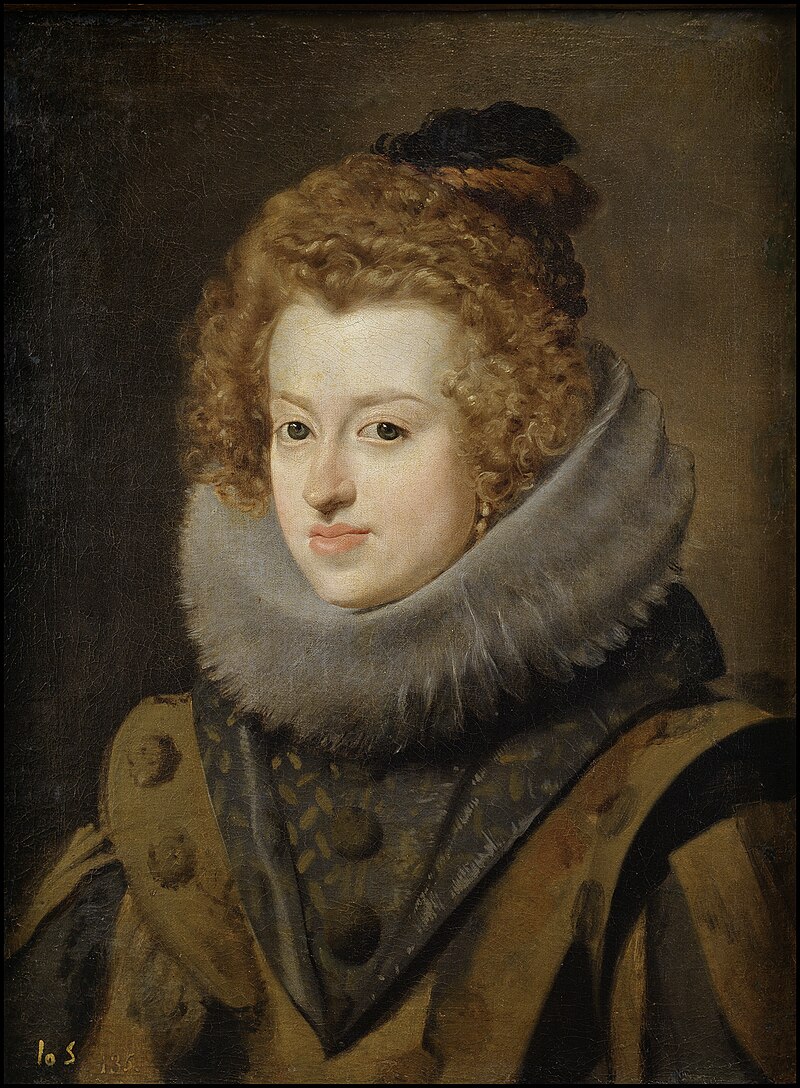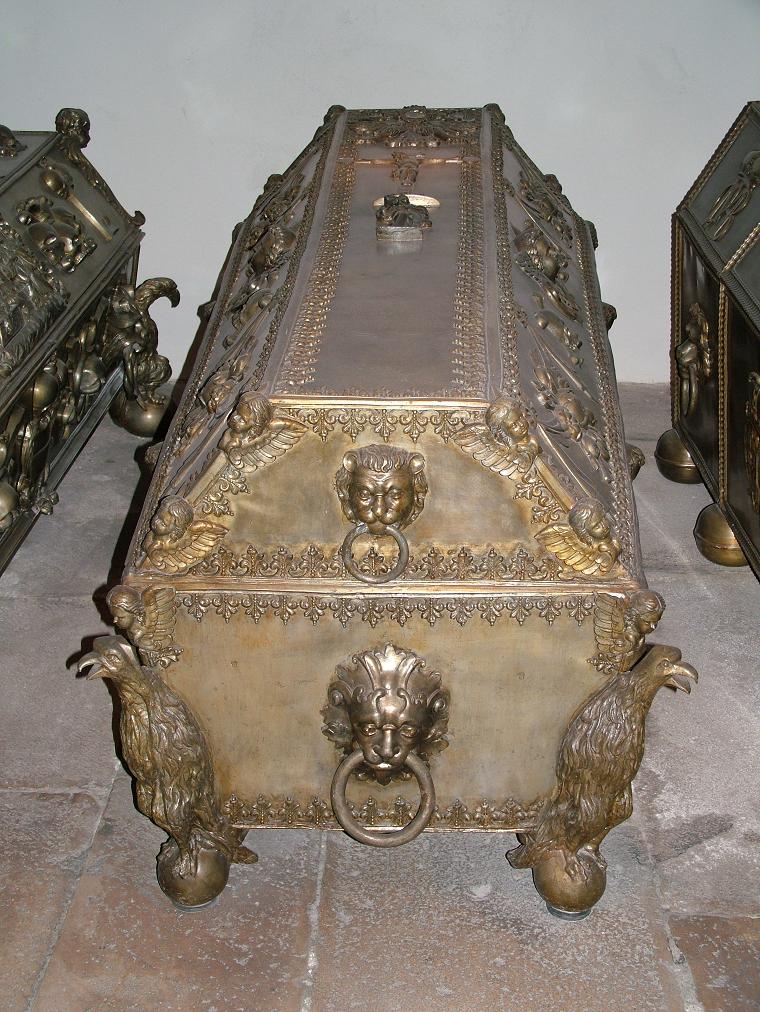by Susan Flantzer
© Unofficial Royalty 2023

Ferdinand III, Holy Roman Emperor, Archduke of Lower and Inner Austria, King of Bohemia, King of Hungary and Croatia; Credit – Wikipedia
The Holy Roman Empire was a limited elective monarchy composed of hundreds of kingdoms, principalities, duchies, counties, prince-bishoprics, and Free Imperial Cities in central Europe. The Holy Roman Empire was not really holy since, after Holy Roman Emperor Charles V in 1530, no emperors were crowned by the pope or a bishop. It was not Roman but rather German because it was mainly in the regions of present-day Germany and Austria. It was an empire in name only – the territories it covered were mostly independent each with its own rulers. The Holy Roman Emperor directly ruled over only his family territories, and could not issue decrees and rule autonomously over the Holy Roman Empire. A Holy Roman Emperor was only as strong as his army and alliances, including marriage alliances, made him, and his power was severely restricted by the many sovereigns of the constituent monarchies of the Holy Roman Empire. From the 13th century, prince-electors, or electors for short, elected the Holy Roman Emperor from among the sovereigns of the constituent states.
Frequently but not always, it was common practice to elect the deceased Holy Roman Emperor’s heir. The Holy Roman Empire was an elective monarchy. No person had a legal right to the succession simply because he was related to the current Holy Roman Emperor. However, the Holy Roman Emperor could and often did, while still alive, have a relative (usually a son) elected to succeed him after his death. This elected heir apparent used the title King of the Romans.
********************
Ferdinand III, Holy Roman Emperor (reigned 1637 – 1657), Archduke of Lower and Inner Austria (reigned 1637 – 1657), King of Bohemia (reigned 1627 – 1657), and King of Hungary and Croatia (reigned 1625 – 1657) was born in Graz, Archduchy of Austria, now in Austria on July 13, 1608. He was the fourth of the seven children and the third but the eldest surviving son of Ferdinand II, Holy Roman Emperor and his first wife Maria Anna of Bavaria. Ferdinand’s paternal grandparents were Karl Franz II, Archduke of Inner Austria and his niece Maria Anna of Bavaria. His maternal grandparents were Wilhelm V, Duke of Bavaria and Renata of Lorraine.
Ferdinand III had six siblings but only three survived childhood:
In 1616, When Ferdinand was eight-years-old, his mother Maria Anna died at the age of forty-one, three years before her husband became Holy Roman Emperor. In 1622, Ferdinand’s father, now Ferdinand III, Holy Roman Emperor, married for a second time to his first cousin once removed, 24-year-old Eleonora Gonzaga of Mantua, daughter of Vincenzo Gonzaga, Duke of Mantua and Monferrato and his second wife and first cousin Eleonora de’ Medici. However, they had no children.
Ferdinand received his education from the Jesuits and spoke several languages. After the deaths of his two elder brothers, Ferdinand was named as his father’s successor and was prepared for his future role. Like his father, he was a devout Catholic, but he was not fond of the influence of the Jesuits in his father’s court. Ferdinand II passed to his son Ferdinand the Habsburg hereditary lands in 1621, the crowns of Hungary and Croatia in 1625, and the crown of Bohemia in 1627. In 1636, Ferdinand II arranged for his son to be elected King of the Romans, ensuring he would be the next Holy Roman Emperor as Ferdinand III. On February 15, 1637, at the age of fifty-eight, Ferdinand II, Holy Roman Emperor died, and his son was elected Holy Roman Emperor.

Ferdinand’s first wife Maria Anna of Spain; Credit – Wikipedia
In 1626, Ferdinand was betrothed to his first cousin Maria Anna of Austria, Infanta of Spain and Portugal, the daughter of Felipe III, King of Spain, and Ferdinand’s paternal aunt Archduchess Margarete of Austria. Maria Anna had previously been betrothed to Ferdinand’s deceased elder brother, Archduke Johann Karl of Austria. On January 26, 1631, Maria Anna arrived in the port city of Trieste (now in Italy), where she was greeted by Ferdinand’s brother Archduke Leopold Wilhelm. A proxy marriage was held that day with Leopold Wilhelm standing in for his brother. Leopold Wilhelm escorted Maria Anna to Vienna, where she married Ferdinand in person on February 20, 1631. Maria Anna was the first of Ferdinand’s three wives.
Ferdinand and Maria Anna had six children. Their eldest child Ferdinand was his father’s heir, had been given some of his father’s hereditary lands, and in 1653, was elected King of the Romans, ensuring he would be Holy Roman Emperor. However, it was not to be. In 1654, twenty-one-year-old Ferdinand died from smallpox. Three other children did not survive childhood.
- Ferdinand, King of the Romans (1633 – 1654), unmarried, died from smallpox
- Archduchess Mariana of Austria (1634 – 1696), married (second wife) her maternal uncle Felipe IV, King of Spain, had five children
- Archduke Philipp August of Austria (1637 – 1639), died in early childhood
- Archduke Maximilian Thomas of Austria (1638 – 1639), died in infancy
- Leopold I, Holy Roman Emperor (1640 – 1705), married (1) his first cousin Margaret Theresa of Spain, had four children, only one survived childhood (2) Claudia Felicitas of Austria, had two children, both died in childhood (3) Eleonor Magdalene of Neuburg, had ten children, five survived childhood
- Archduchess Maria of Austria (born and died 1646), died in infancy
Pregnant with her sixth child, 39-year-old Empress Maria Anna suddenly felt ill with a fever, had heavy bleeding, and died on May 13, 1646. Immediately after her death, the unborn child, a girl, was delivered by Cesarean section. She was named Maria after her mother, but lived only a few hours. Both mother and daughter were placed in the same coffin and interred in the Imperial Crypt at the Capuchin Church in Vienna.

Ferdinand’s second wife Maria Leopoldine of Austria; Credit – Wikipedia
Two years later, Ferdinand III married again, on July 2, 1648, to Archduchess Maria Leopoldine of Austria, another first cousin. Maria Leopoldine was the daughter of Ferdinand III’s paternal uncle, Leopold V, Archduke of Austria, and Claudia de’ Medici. Ferdinand and Maria Leopoldine had one son.
Ferdinand and Maria Leopoldine had one son. Sadly, the childbirth was very difficult, and 17-year-old Maria Leopoldine died on August 19, 1649. She was interred in the Imperial Crypt at the Capuchin Church in Vienna.

Ferdinand’s third wife Eleonora Gonzaga; Credit – Wikipedia
On April 30, 1651, Ferdinand III married Eleonora Gonzaga of Mantua, daughter of Carlo III Gonzaga, Duke of Nevers and his wife and cousin Maria Gonzaga, reigning Duchess of Montferrat. Eleonora was the great-niece and namesake of Ferdinand’s stepmother, the second wife of his father Ferdinand II, also named Eleonora Gonzaga.
Ferdinand and Eleonora had four children, but only two survived childhood.
Ferdinand III became Holy Roman Emperor in 1537, at the beginning of the last decade of the Thirty Years’ War (1618 – 1648), and had been commander-in-chief of the army since 1634. The Thirty Years’ War was one of the longest and most destructive conflicts in European history, with an estimated 4.5 to 8 million soldiers and civilians dying as a result of battle, famine, and disease. During Ferdinand III’s reign, the power of the Holy Roman Empire, which had increased during his father’s reign, declined. He wanted to end the war early, but after military defeats and with declining power, he felt forced to renounce many of the long-standing Habsburg positions. Although he knew the Holy Roman Empire would be weaker, Ferdinand set out on a policy toward ending the war.
The Peace of Westphalia, signed in October 1648, ended the Thirty Years’ War and brought peace to the Holy Roman Empire. Holy Roman Emperor Ferdinand III, the kingdoms of France and Sweden, and their allies among the constituent states of the Holy Roman Empire participated in the treaties. Although the power of the Holy Roman Empire was weaker after the peace than before the war, in Bohemia and Hungary, where Ferdinand was king, and in the Austrian hereditary lands, Ferdinand’s position as sovereign was stronger.
Ferdinand was a patron of the arts and sciences, very musical, and a composer, composing numerous sacred and secular pieces of music. He was the first of the Habsburg rulers whose musical compositions have survived

Ferdinand III’s sarcophagus in the Imperial Crypt; Credit – By krischnig – Self-photographed, Copyrighted free use, https://commons.wikimedia.org/w/index.php?curid=88260340
Ferdinand III, Holy Roman Emperor, Archduke of Lower and Inner Austria, King of Bohemia, King of Hungary and Croatia, died, aged forty-eight, on April 2, 1657, in Vienna, Archduchy of Austria. He was buried in the Imperial Crypt at the Capuchin Church in Vienna. His third wife, Eleonora Gonzaga, survived him by twenty-nine years, dying on December 6, 1686, in Vienna, Archduchy of Austria at the age of fifty-six. She was also buried in the Imperial Crypt.
This article is the intellectual property of Unofficial Royalty and is NOT TO BE COPIED, EDITED, OR POSTED IN ANY FORM ON ANOTHER WEBSITE under any circumstances. It is permissible to use a link that directs to Unofficial Royalty.
Works Cited
- Ferdinand III. (HRR) (2023) Wikipedia (German). Available at: https://de.wikipedia.org/wiki/Ferdinand_III._(HRR) (Accessed: 22 June 2023).
- Ferdinand III, Holy Roman Emperor (2023) Wikipedia. Available at: https://en.wikipedia.org/wiki/Ferdinand_III,_Holy_Roman_Emperor (Accessed: 22 June 2023).
- Flantzer, Susan. (2023) Ferdinand II, Holy Roman Emperor, Archduke of Inner Austria, King of Bohemia, King of Hungary and Croatia, Unofficial Royalty. Available at: https://www.unofficialroyalty.com/ferdinand-ii-holy-roman-emperor-archduke-of-austria-king-of-bohemia-king-of-hungary-and-croatia/.
- Wheatcroft, Andrew. (1995) The Habsburgs. London: Viking.
- Wilson, Peter H. (2016) Heart of Europe – A History of the Holy Roman Empire. Cambridge, MA: Harvard University Press.


















